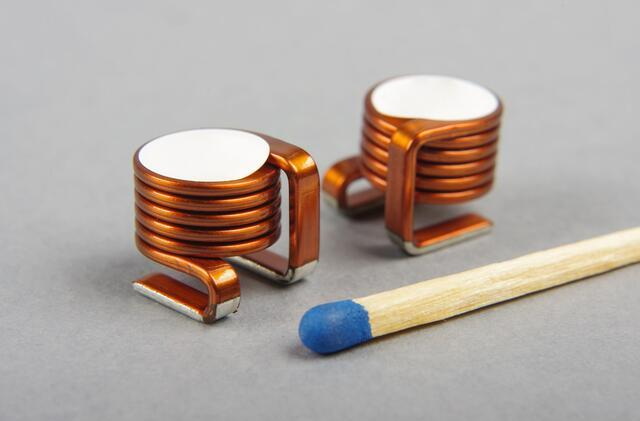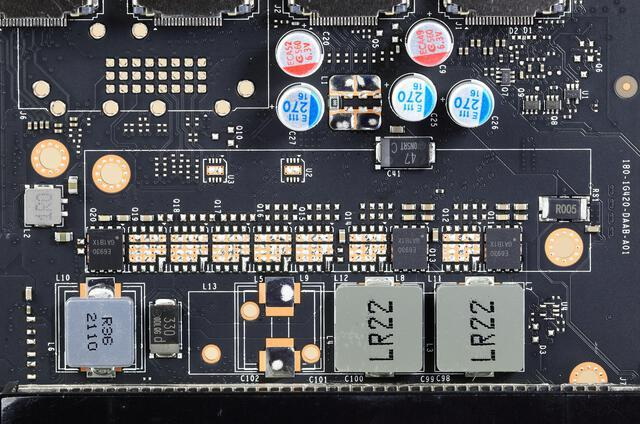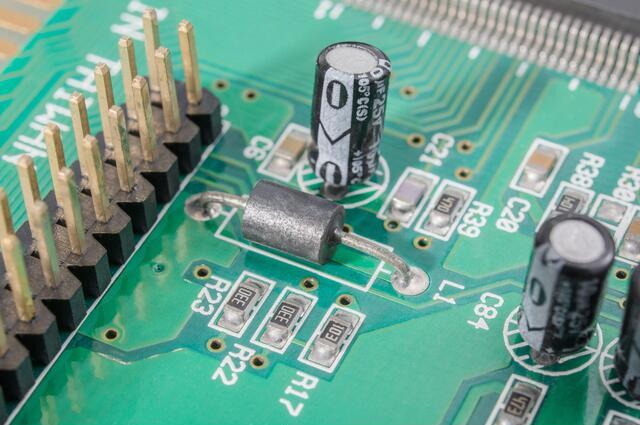Content Menu
● Understanding the Orgone Accumulator
● Common Issues and Troubleshooting Steps
>> Power Supply Problems
>> SMT Component Issues
>> Teensy Board Integration
● Advanced Troubleshooting Techniques
>> Signal Path Analysis
>> Component-Level Testing
● PCB-Specific Troubleshooting
>> Trace Continuity and Shorts
>> Through-Hole Component Issues
● Preventive Measures and Best Practices
● Conclusion
● FAQ
>> 1. What should I do if my Orgone Accumulator PCB doesn't power on?
>> 2. How can I troubleshoot SMT component issues on the Orgone Accumulator PCB?
>> 3. What steps should I take if the CV inputs aren't working correctly?
>> 4. How do I diagnose issues with the Teensy board integration?
>> 5. What are some common PCB issues I should look for on the Orgone Accumulator?
● Citations:
The Orgone Accumulator is a complex electronic module that requires careful assembly and troubleshooting. When building or repairing an Orgone Accumulator PCB, you may encounter various issues that can affect its performance. This comprehensive guide will walk you through the process of identifying and resolving common problems with your Orgone Accumulator PCB, focusing on SMT (Surface Mount Technology) components and general PCB troubleshooting techniques.

Understanding the Orgone Accumulator
The Orgone Accumulator is a digital phase-accumulation oscillator module capable of creating a wide range of timbres, from classic subtractive-synth-style waveforms to complex digital sounds[5]. It's a popular choice among electronic music enthusiasts and synthesizer builders. The PCB (Printed Circuit Board) is the heart of this module, containing various SMT components and through-hole parts that work together to generate its unique sounds.
Common Issues and Troubleshooting Steps
Power Supply Problems
One of the first things to check when troubleshooting your Orgone Accumulator PCB is the power supply. Ensure that you're providing the correct voltage and that the power connections are secure.
1. Check the power jumper settings: The Orgone Accumulator has two power options. You can either use your system's 5-volt power or use an on-board voltage regulator to generate 5V from the 12V rail[1].
2. Verify jumper connections: If you're using the regulator, solder a jumper across J1 where it says "IN". If you're using system 5V power, solder a jumper across J1 where it says "EX"[1].
3. Test power rails: Use a multimeter to check for continuity between each of the 10-ohm resistor legs and a ground pad. You might get a brief beep from your continuity tester as capacitors charge[1].
4. Inspect IC socket connections: Ensure that the IC sockets are correctly connected to the power rails. The pins marked red are positive +12V, and the light blue are negative -12V[1].
SMT Component Issues
Surface Mount Technology (SMT) components are widely used in modern electronics, including the Orgone Accumulator PCB. These tiny parts can be challenging to work with and are prone to specific issues.
1. Check for misaligned or shifted components: SMT components can sometimes shift during the soldering process. Carefully inspect each component under magnification to ensure proper alignment[2].
2. Look for solder bridges: Excess solder can create unwanted connections between adjacent pins or pads. Use a magnifying glass or microscope to inspect for any solder bridges, especially on ICs and other multi-pin components[2].
3. Verify component orientation: Some SMT components, like ICs and diodes, have a specific orientation. Double-check that all components are placed correctly according to the PCB markings and build instructions[1].
4. Inspect for cold solder joints: Cold solder joints can cause intermittent or complete failures. Look for dull, grainy, or blob-like solder joints and reflow them if necessary[2].
Teensy Board Integration
The Orgone Accumulator uses a Teensy board as its main processor. Proper installation and connection of the Teensy are crucial for the module's functionality.
1. Check Teensy header installation: Ensure that the Teensy headers are correctly soldered to the PCB. The 7-pin header on the middle row of the SMD pins should be installed first as a guide for the others[1].
2. Verify Teensy pin connections: Make sure all the Teensy pins are properly soldered to the Teensy board itself. Be careful not to get any solder on other Teensy components[1].
3. Test Teensy functionality: If you suspect an issue with the Teensy, remove it from the PCB and test it separately on a computer to ensure it's functioning correctly[3].
4. Check for firmware issues: Use the Arduino software to upload the test program included in the firmware. This program flashes all the LEDs and tests the CV inputs, helping you identify any issues with the Teensy's integration[1].
Advanced Troubleshooting Techniques
Signal Path Analysis
When dealing with more complex issues, it's often helpful to trace the signal path through the PCB.
1. Use an oscilloscope: Connect an oscilloscope to various test points on the PCB to observe the signal at different stages of the circuit. This can help identify where in the signal chain a problem might be occurring.
2. Check CV inputs: The Orgone Accumulator has multiple CV (Control Voltage) inputs. Use the test program to verify that all CV inputs are functioning correctly. With nothing plugged in, the values should hover around or above 4000. Plugging in an LFO should cause the numbers to move together up to just over 8000 to around 0[1].
3. Analyze analog section: If a CV input isn't working correctly, investigate the associated areas of the analog section. The attenuverters are associated with U1, and the level shifter is associated with U2[1].
Component-Level Testing
For persistent issues, you may need to test individual components.
1. Test capacitors: Use an ESR meter or capacitance meter to check that capacitors are within their specified values. Pay special attention to electrolytic capacitors, which can degrade over time.
2. Check resistors: Use a multimeter to verify that resistors are within their specified tolerance range.
3. Test ICs: If you suspect an IC is faulty, consider using an IC tester or replacing the chip with a known good one to isolate the issue.
4. Inspect diodes: Use a multimeter's diode test function to check that diodes are functioning correctly and are installed in the correct orientation.

PCB-Specific Troubleshooting
Trace Continuity and Shorts
1. Perform a visual inspection: Carefully examine the PCB for any visible damage, such as scratches, burns, or lifted pads.
2. Check for shorts: Use a multimeter to check for unwanted connections between traces that should be isolated.
3. Verify trace continuity: Use a continuity tester to ensure that traces that should be connected are indeed continuous.
Through-Hole Component Issues
While the Orgone Accumulator uses many SMT components, it also incorporates through-hole parts.
1. Check soldering quality: Inspect all through-hole solder joints for proper wetting and connection.
2. Look for component damage: Examine through-hole components for any signs of physical damage or overheating.
3. Verify component values: Double-check that all through-hole components match the values specified in the build documentation.
Preventive Measures and Best Practices
To minimize issues with your Orgone Accumulator PCB, consider the following best practices:
1. Use proper ESD protection: Always work on your PCB in an ESD-safe environment to prevent damage to sensitive components.
2. Follow the build guide closely: The Orgone Accumulator build guide provides detailed instructions. Following them carefully can prevent many common issues[1].
3. Use quality tools and materials: Invest in good-quality soldering equipment and use fresh, high-quality solder to ensure reliable connections.
4. Take your time: Rushing through the build process can lead to mistakes. Work methodically and double-check each step.
5. Keep the PCB clean: Use isopropyl alcohol and a soft brush to clean the PCB after soldering to remove any flux residue or debris.
Conclusion
Troubleshooting an Orgone Accumulator PCB requires patience, attention to detail, and a systematic approach. By following the steps outlined in this guide, you can identify and resolve many common issues that may arise during the build or operation of your Orgone Accumulator. Remember to always prioritize safety when working with electronic components and to consult the official documentation and community resources when in doubt.
Whether you're dealing with power supply problems, SMT component issues, or more complex signal path anomalies, a methodical troubleshooting process will help you get your Orgone Accumulator up and running. With practice and experience, you'll become more adept at diagnosing and fixing issues, ensuring that your synthesizer module continues to produce the unique and captivating sounds it's known for.

FAQ
1. What should I do if my Orgone Accumulator PCB doesn't power on?
First, double-check all power connections and ensure that the correct voltage is being supplied. Verify that the power jumpers are set correctly for your chosen power source (either system 5V or onboard regulator). If the issue persists, use a multimeter to test for continuity along the power traces and check for any shorts.
2. How can I troubleshoot SMT component issues on the Orgone Accumulator PCB?
To troubleshoot SMT component issues:
- Use a magnifying glass or microscope to inspect for misalignments or solder bridges.
- Check component orientation, especially for ICs and diodes.
- Look for cold solder joints and reflow if necessary.
- Use a multimeter to test for continuity and proper connections.
3. What steps should I take if the CV inputs aren't working correctly?
If CV inputs aren't functioning properly:
- Upload the test program included in the firmware to check all inputs.
- Verify that the values read correctly (around 4000 with nothing plugged in).
- Inspect the analog section, focusing on the attenuverters (U1) and level shifter (U2).
- Check for any bad solder joints or damaged components in the CV input circuitry.
4. How do I diagnose issues with the Teensy board integration?
To diagnose Teensy integration problems:
- Ensure all Teensy headers are correctly soldered to the PCB.
- Verify that all Teensy pins are properly connected.
- Test the Teensy separately on a computer to rule out firmware issues.
- Use the test program to check LED functionality and CV inputs.
5. What are some common PCB issues I should look for on the Orgone Accumulator?
Common PCB issues to look for include:
- Trace discontinuities or shorts.
- Lifted pads or damaged traces.
- Incorrect component values or orientations.
- Cold solder joints or insufficient solder on connections.
- Debris or flux residue causing unwanted connections.
Citations:
[1] http://neutron-sound.com/PDFs/NOA_build_manual.pdf
[2] https://blog.sina.com.cn/s/blog_4c10b9630100gcci.html
[3] http://blog.batzi.com.au/2017/04/building-the-neutron-sound-orgone-accumulator/
[4] https://www.analog.com/cn/resources/packaging-quality-symbols-footprints/package-resources.html
[5] http://www.neutron-sound.com/PDFs/OrgoneRetailGuide.pdf
[6] https://baike.baidu.com/item/%E7%94%B5%E5%AD%90%E7%BB%84%E8%A3%85%E6%8A%80%E6%9C%AF%E4%B8%93%E4%B8%9A%E8%8B%B1%E8%AF%AD/12086345
[7] http://clsound.com/orgoneaccumulato.html
[8] https://smtnet.com/library/index.cfm?fuseaction=browse_articles&start_at=451




















